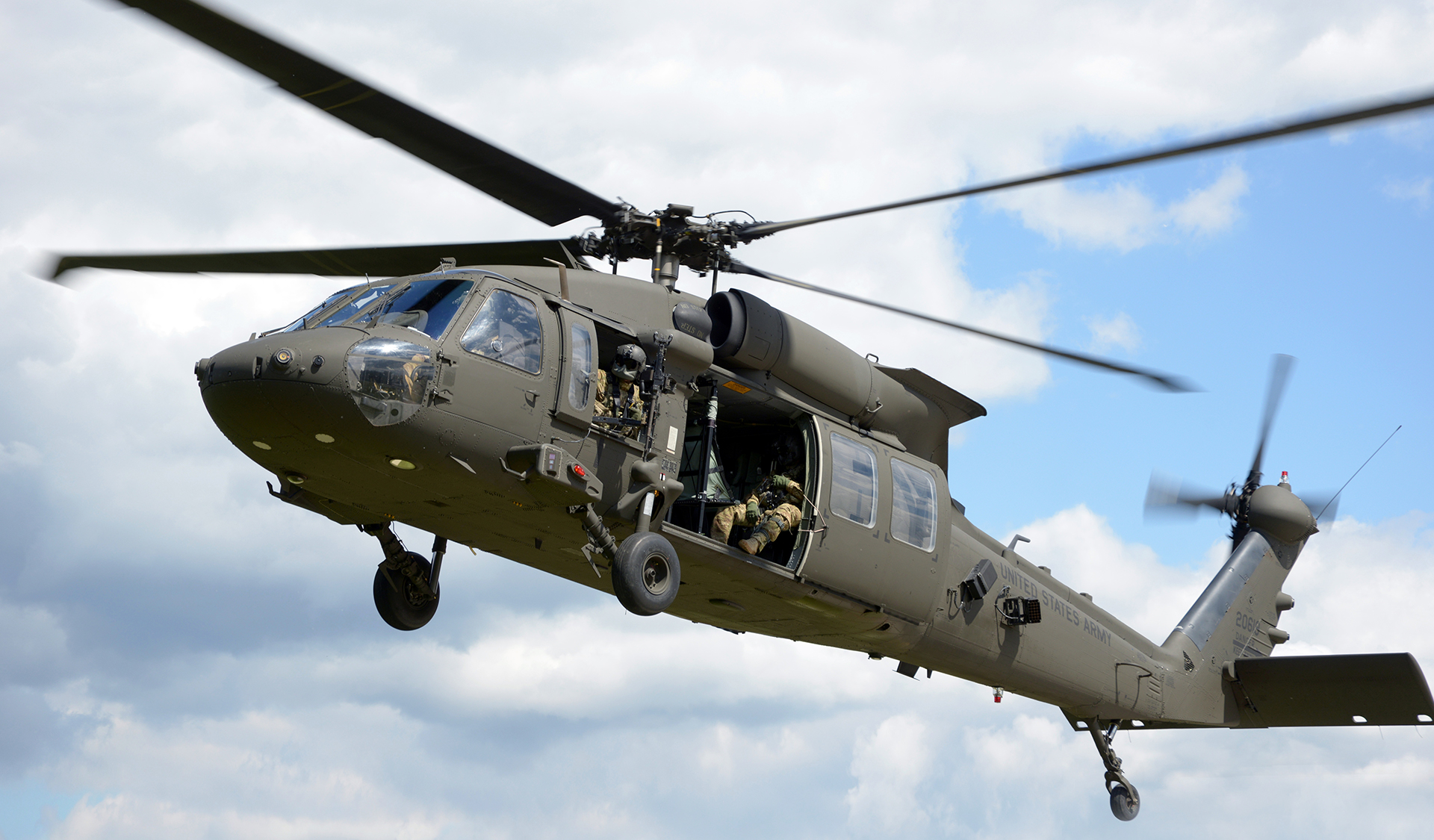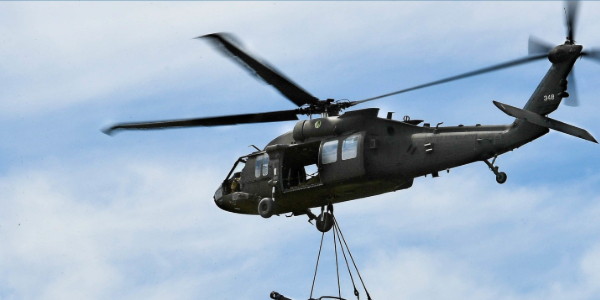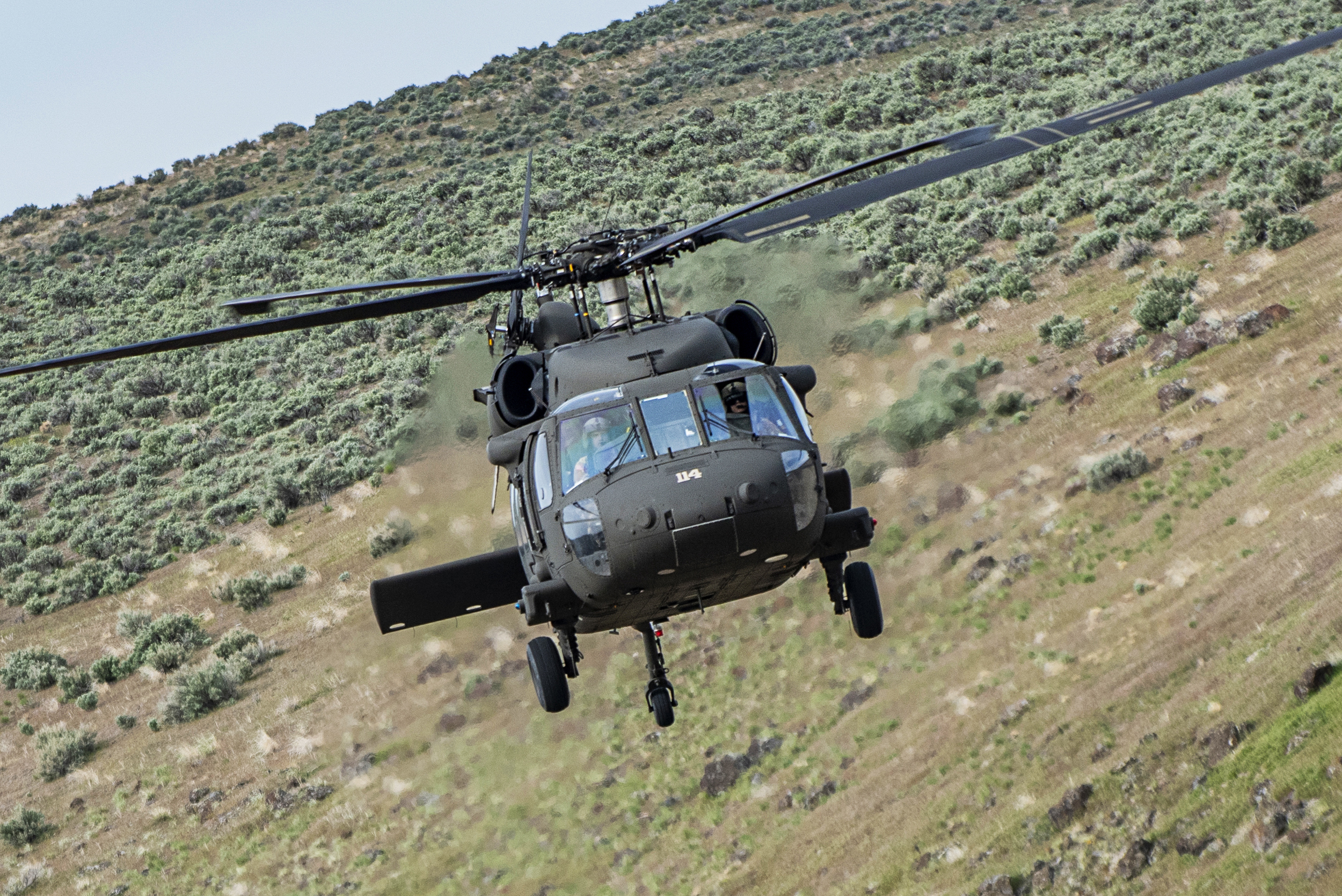Just How the Blackhawk Helicopter Ended Up Being a Symbol of Armed Forces Strength and Versatility
Just How the Blackhawk Helicopter Ended Up Being a Symbol of Armed Forces Strength and Versatility
Blog Article
Checking Out the Thrills and Innovations of the Blackhawk Helicopter
The Blackhawk helicopter stands as a testament to military aeronautics's advancement, combining technical advancements with useful applications. What exists ahead for this legendary airplane, and how will arising modern technologies shape its future in military operations?
Background of the Blackhawk Helicopter
Given that its beginning in the 1960s, the Blackhawk helicopter has actually played a critical function in modern armed forces air travel. Established by Sikorsky Aircraft, the UH-60 Blackhawk was developed to meet the U.S. Military's need for a flexible energy helicopter with the ability of doing a range of missions, consisting of army transportation, medical emptying, and cargo airlift. The layout was a response to the restrictions of earlier helicopters, particularly in regards to rate, survivability, and maneuverability.
The Blackhawk made its first trip in 1974 and quickly got in service in 1979. Its intro marked a considerable advancement in helicopter innovation, featuring a two-rotor system that boosted efficiency and stability. The airplane's tough building and construction and progressed avionics allowed it to operate effectively in diverse settings and problems.
Throughout the years, the Blackhawk has actually been constantly updated, including lessons picked up from numerous fight situations. Its deployment in disputes such as the Gulf War, Somalia, and the War on Fear further strengthened its online reputation as an essential asset. The Blackhawk's heritage is identified by its versatility and resilience, making it a keystone of military air travel for years.
Key Functions and Specs
The Blackhawk helicopter is identified by its robust design and advanced technological attributes, which collectively boost its functional capacities. Created largely for energy missions, the Blackhawk flaunts a maximum launch weight of approximately 22,000 pounds, enabling it to carry considerable hauls while preserving dexterity.
Geared up with 2 General Electric T700-GE-701C engines, the Blackhawk attains a maximum rate of around 183 knots and an array of 368 maritime miles - Blackhawk Helicopter. Its advanced blades system features a four-blade main blades and a four-blade tail rotor, ensuring stability and maneuverability in various flying conditions
The helicopter's cabin can suit as much as 11 soldiers or various freight setups, showcasing convenience in mission accounts. In addition, the Blackhawk is developed with advanced avionics, including electronic flight controls and a thorough cockpit screen, enhancing pilot situational recognition.
For boosted survivability, the Blackhawk integrates ballistic shield and self-sealing gas containers. Its capability to run in diverse atmospheres, from deserts to icy terrains, further strengthens its track record as a trusted system for army and humanitarian procedures alike. The Blackhawk's mix of strength, power, and convenience makes it a foundation of modern aerial capacities.
Innovations in Modern Technology
Technologies in innovation have substantially boosted the capabilities of the Blackhawk helicopter, ensuring it remains at the forefront of armed forces air travel. Among one of the most significant developments is the combination of advanced avionics systems, which supply improved situational understanding through real-time data processing and display screen. This technology permits pilots to browse intricate environments better, enhancing objective success rates.

Furthermore, the introduction of digital fly-by-wire systems has reinvented the control mechanisms of the Blackhawk, giving smoother handling and increased responsiveness. Jointly, these technical developments guarantee that the Blackhawk helicopter stays an essential asset in modern army procedures.
Duties in Armed Force Workflow
With advanced innovation boosting its capacities, the Blackhawk helicopter plays a diverse see here function in army procedures. Primarily, it is employed for army transport, enabling fast implementation and extraction of personnel in various battle scenarios. Its sizable cabin can accommodate as much as 11 soldiers, making it a crucial asset for special operations and large-scale missions.
In Addition, the Blackhawk acts as a medevac system, geared up to transport damaged soldiers promptly and efficiently from the battleground to medical facilities - Blackhawk Helicopter. Its convenience reaches logistical assistance, where it lugs materials and devices essential for sustaining armed forces operations in remote areas

The helicopter is likewise crucial in reconnaissance goals, providing aerial security and intelligence-gathering abilities. Its ability to run in varied atmospheres-- varying from urban setups to severe surfaces-- more solidifies its value on the battlefield.
Moreover, the Blackhawk can be outfitted with advanced weapons, enabling it to engage in fight and provide close air assistance. This adaptability emphasizes the helicopter's integral role in contemporary army techniques, making it a crucial part of militaries worldwide.
Future Developments and Innovations
Advancements in innovation pledge to usher in a new age for the Blackhawk helicopter, improving its capacities and operational effectiveness. Future growths for the Blackhawk may consist of enhancements in avionics, such as sophisticated trip control systems and enhanced situational recognition tools powered by man-made intelligence.
In addition, the combination of unmanned systems is on the perspective, potentially permitting for manned-unmanned teaming operations that can broaden objective profiles and decrease risk to workers. The Blackhawk's design is also expected to include lighter and more powerful materials, boosting fuel efficiency and overall efficiency.

Conclusion
To conclude, the Blackhawk helicopter stands for a substantial achievement in armed forces air travel, characterized by its versatility and progressed technical attributes. Its historic advancement mirrors a consistent feedback to operational demands, enhancing abilities in numerous duties such as troop transportation and official source medevac procedures. Ongoing innovations, including the integration of expert system and hybrid-electric propulsion, guarantee to more enhance the Blackhawk's efficiency and importance in future armed forces engagements, ensuring its condition as an essential asset on the combat zone.

With innovative innovation enhancing its capacities, the Blackhawk helicopter plays a complex role in military procedures. (Blackhawk Helicopter)
Report this page